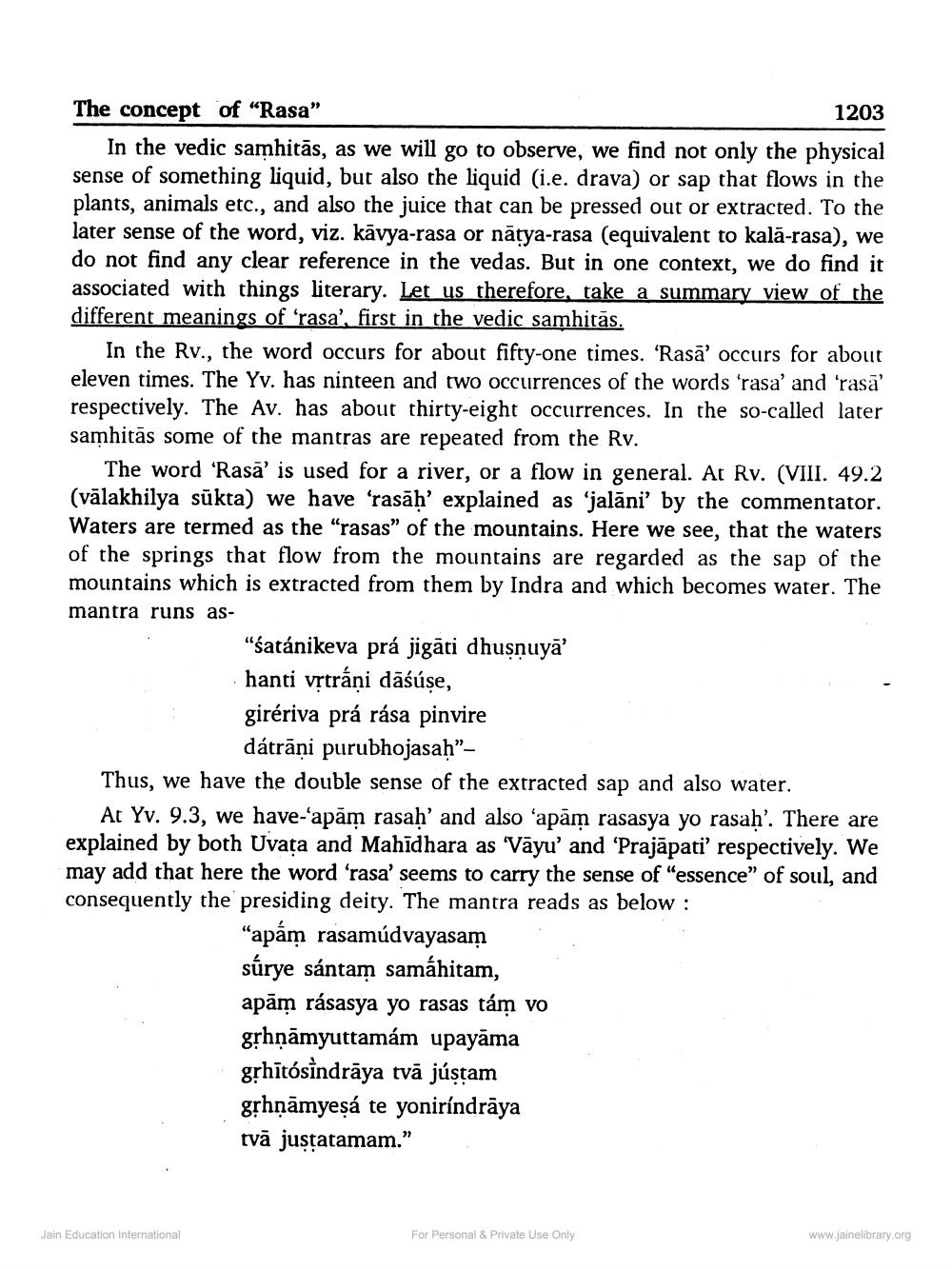________________
The concept of “Rasa”
1203 In the vedic samhitās, as we will go to observe, we find not only the physical sense of something liquid, but also the liquid (i.e. drava) or sap that flows in the plants, animals etc., and also the juice that can be pressed out or extracted. To the later sense of the word, viz. kävya-rasa or nātya-rasa (equivalent to kalā-rasa), we do not find any clear reference in the vedas. But in one context, we do find it associated with things literary. Let us therefore, take a summary view of the different meanings of 'rasa', first in the vedic samhitās.
In the Rv., the word occurs for about fifty-one times. 'Rasā' occurs for about eleven times. The Yv. has ninteen and two occurrences of the words 'rasa' and 'rasa' respectively. The Av. has about thirty-eight occurrences. In the so-called later samhitās some of the mantras are repeated from the Rv.
The word 'Rasa' is used for a river, or a flow in general. At Rv. (VIII. 49.2 (vālakhilya sūkta) we have 'rasāḥ' explained as 'jalāni' by the commentator. Waters are termed as the "rasas" of the mountains. Here we see, that the waters of the springs that flow from the mountains are regarded as the sap of the mountains which is extracted from them by Indra and which becomes water. The mantra runs as
“satánikeva prá jigāti dhusnuya' hanti vrtráņi dāśuse, girériva prá rása pinvire
dátrāņi purubhojasaḥ”Thus, we have the double sense of the extracted sap and also water.
At Yv. 9.3, we have-apām rasaḥ' and also ‘apām rasasya yo rasah'. There are explained by both Uvața and Mahīdhara as Vāyu' and 'Prajāpati' respectively. We may add that here the word 'rasa' seems to carry the sense of “essence" of soul, and consequently the presiding deity. The mantra reads as below :
“apám rasamúdvayasam súrye sántam samáhitam, apām rásasya yo rasas tám vo gļhņāmyuttamám upayāma gļhītósindrāya tvā jústam gļhņāmyeşá te yoniríndrāya vã justatamam.”
Jain Education International
For Personal & Private Use Only
www.jainelibrary.org




